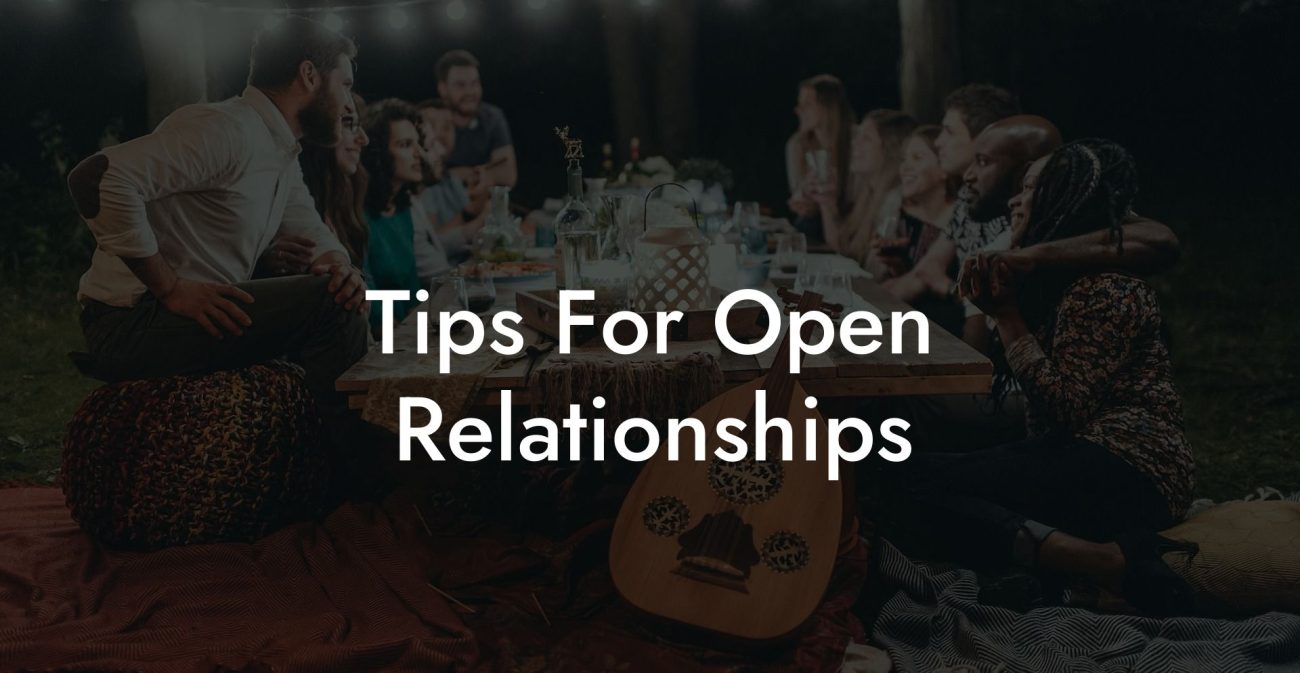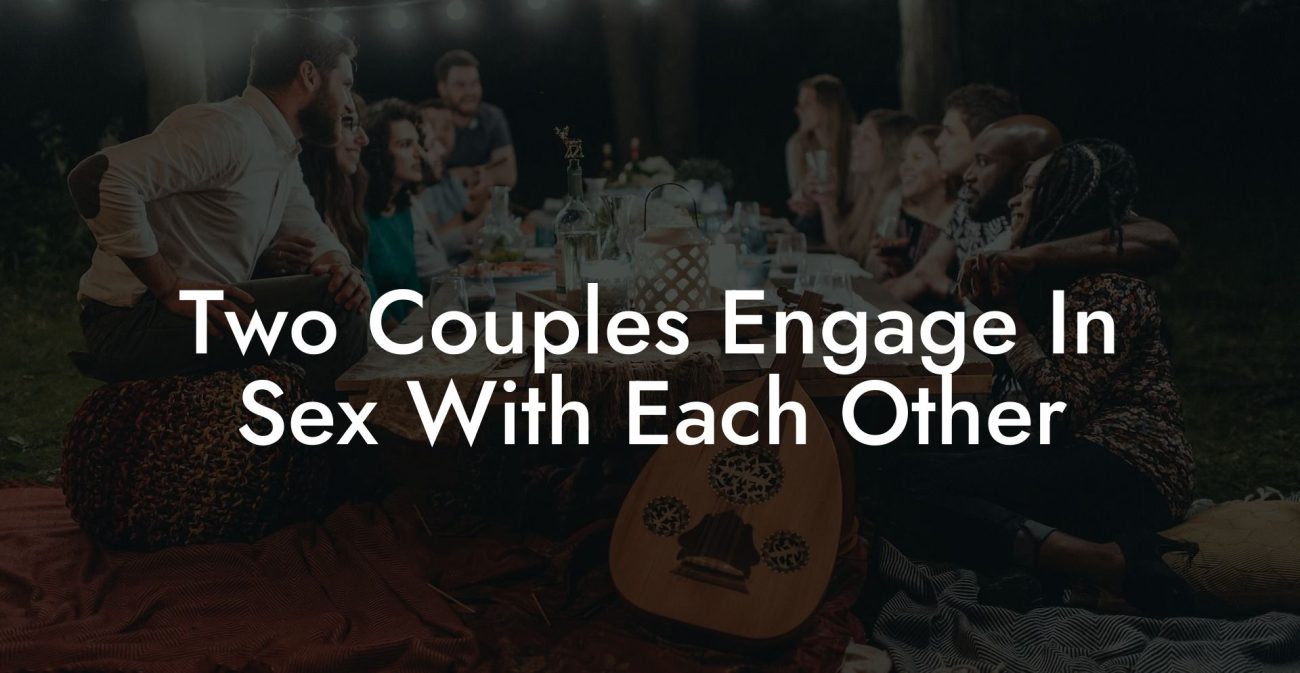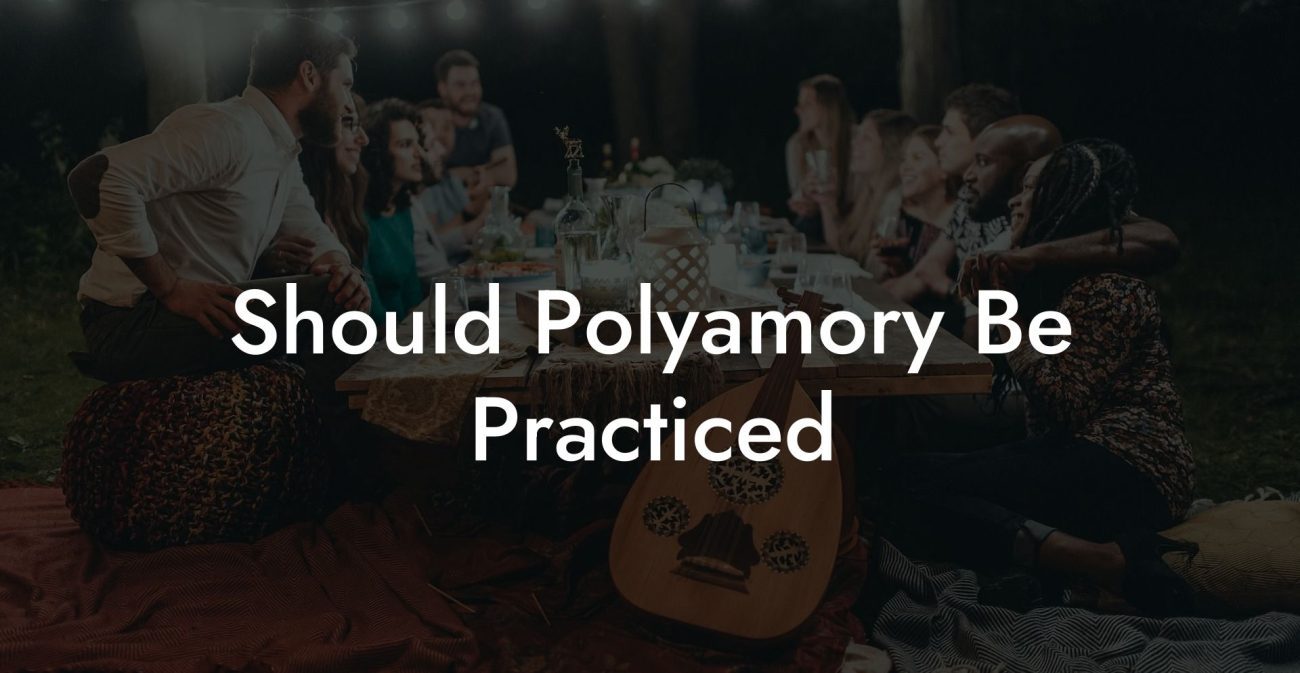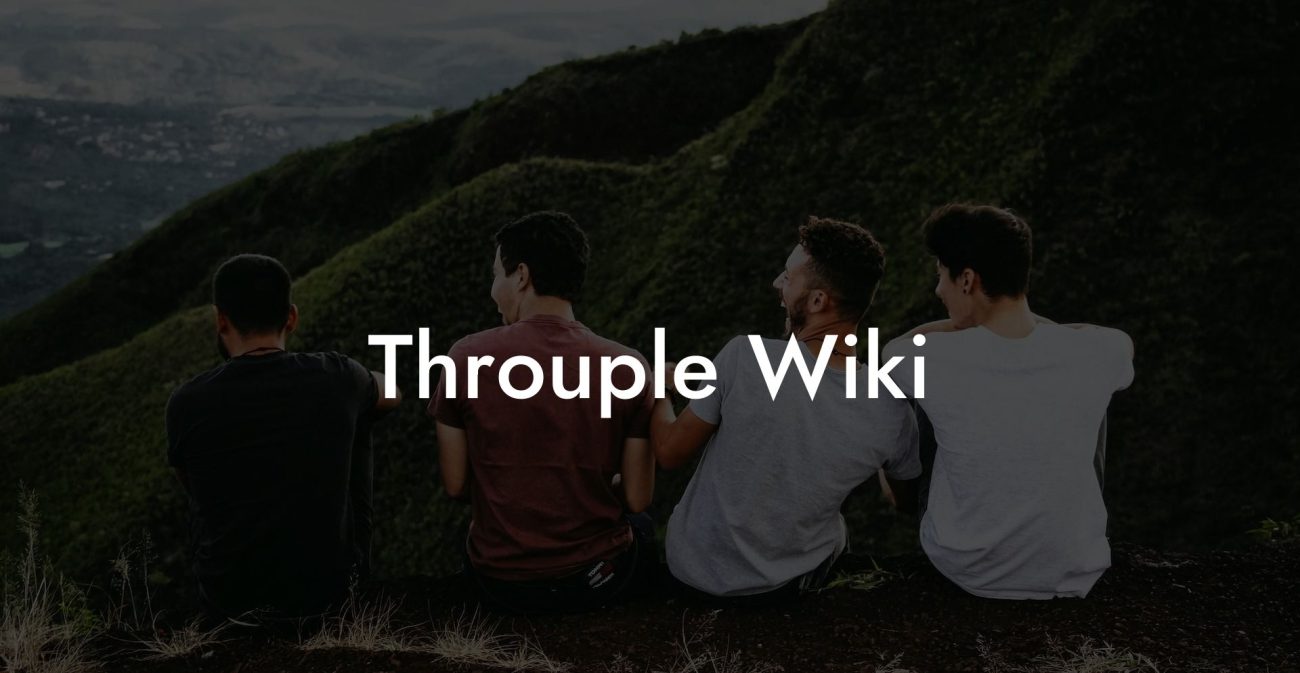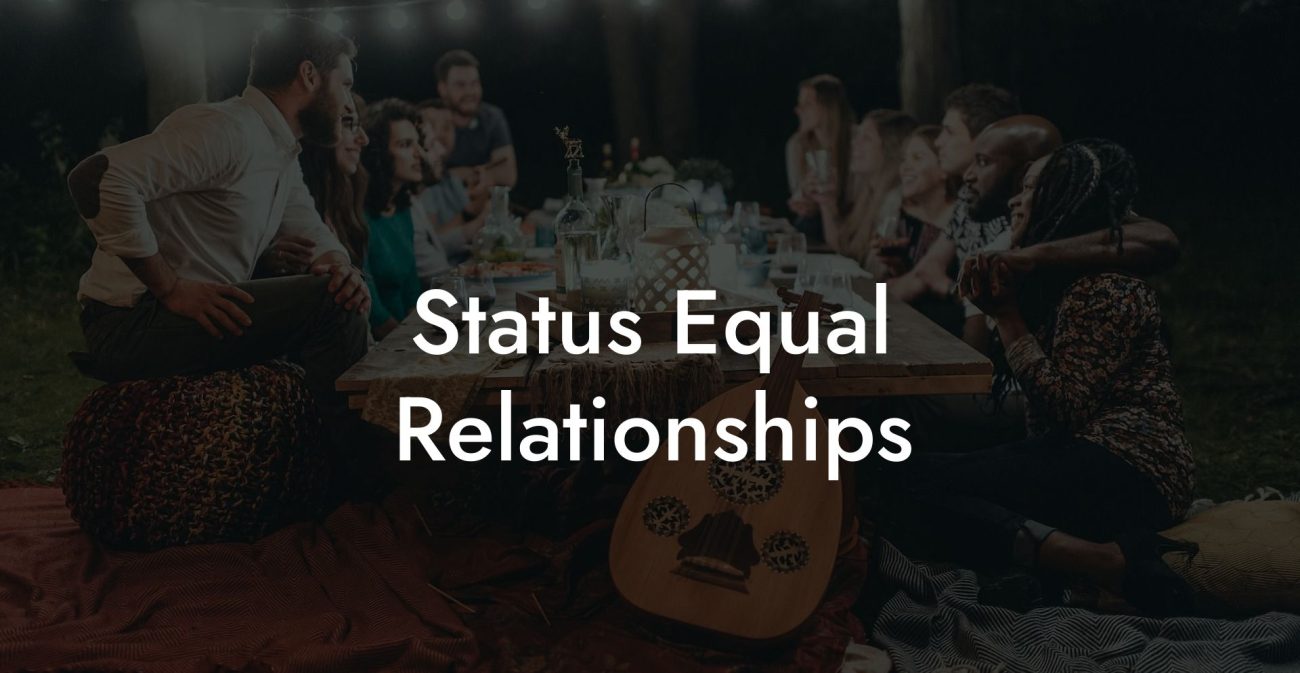Guide to Poly Anarchy

Welcome to our guide to Poly Anarchy, a modern, radical approach to relationships that challenges traditional norms and embraces the full spectrum of human connection. In this guide, we explore what poly anarchy is, how it differs from conventional polyamory and relationship anarchy, and why it resonates with many people today. Whether you’re new to the concept or looking to deepen your understanding, this guide will provide detailed insights, practical strategies, and expert perspectives on living a life of non-hierarchical, self-determined love.
Quick Links to Useful Sections
- Understanding Poly Anarchy: Definition and Concepts
- The Origins and Evolution of Poly Anarchy
- Core Principles of Poly Anarchy
- Benefits of Embracing Poly Anarchy
- Challenges and Criticisms of Poly Anarchy
- Practical Strategies for Embracing Poly Anarchy
- Legal and Social Considerations
- Real-Life Experiences and Anecdotes
- Expert Insights and Data Research Findings
- FAQ: Guide to Poly Anarchy
- Resources and Community Support
Understanding Poly Anarchy: Definition and Concepts
Poly anarchy is a relationship philosophy that combines elements of polyamory with the principles of relationship anarchy. In poly anarchy, individuals engage in multiple romantic or sexual relationships without adhering to traditional structures, hierarchies, or predefined labels. Instead of assigning primary or secondary statuses, all connections are treated as unique, fluid, and self-determined. This model prioritizes individual freedom, mutual respect, and the idea that relationships should evolve organically without the constraints of societal expectations.
At its core, poly anarchy rejects the conventional idea that love and commitment must be compartmentalized into rigid categories. Rather, it encourages individuals to build relationships based on genuine connection, open communication, and shared values, without imposing hierarchical structures that might limit personal growth or the diversity of connections.
Unlike traditional polyamory, where couples might have a primary partner and additional secondary connections, poly anarchy advocates for non-hierarchical, decentralized relationships where every connection is considered valuable on its own merits. In poly anarchy, the focus is on freedom of choice and the continuous negotiation of boundaries, ensuring that every partner's needs and desires are honored without defaulting to predetermined roles.
The Origins and Evolution of Poly Anarchy
The roots of poly anarchy can be traced back to the broader movements of relationship anarchy and ethical non-monogamy that emerged in the late 20th century. Relationship anarchy was popularized in the early 2000s by thinkers who challenged the societal norms that define and restrict intimate relationships. Influenced by the counterculture movements of the 1960s and 1970s, where sexual liberation and rejection of traditional institutions were at the forefront, relationship anarchy proposed that love should not be confined by societal expectations.
As the ideas of relationship anarchy began to merge with the practice of polyamory, a new paradigm emerged: poly anarchy. This model retains the core values of non-monogamy, such as informed consent and open communication, but goes further by rejecting any form of hierarchical organization within relationships. It invites individuals to design their own relational architectures, free from the limitations of labels like “primary” or “secondary.”
Over the years, poly anarchy has evolved as more people question traditional relationship models and seek forms of connection that are adaptable, dynamic, and true to their personal identities. Today, poly anarchy is embraced by individuals who value autonomy, creativity, and the continuous evolution of their relational landscape.
Core Principles of Poly Anarchy
Successful poly anarchy is built on several foundational principles that guide interpersonal interactions and relationship structures:
- Freedom of Choice: Each individual is free to pursue relationships based on their desires without being constrained by traditional labels or societal expectations.
- Non-Hierarchical Structure: All relationships are considered equal, and no connection is automatically prioritized over another. This principle fosters an environment of fairness and mutual respect.
- Informed Consent: Consent is ongoing and must be freely given by all parties involved. Clear communication ensures that everyone is aware of and comfortable with the relationship dynamics.
- Open and Honest Communication: Regular dialogue about feelings, boundaries, and expectations is essential. Poly anarchists value transparency as a way to build trust and adapt to changes over time.
- Mutual Respect and Autonomy: Respecting each person’s individuality and allowing each partner to express themselves freely is a core tenet. In poly anarchy, every partner’s voice is equally important.
- Flexibility and Adaptability: Relationships are fluid, and so should be the agreements that govern them. Boundaries and commitments are revisited regularly to ensure they remain relevant and supportive of everyone’s needs.
- Self-Awareness and Accountability: Continuous self-reflection is crucial. Understanding your own emotions, triggers, and desires helps maintain healthy, fulfilling connections.
Benefits of Embracing Poly Anarchy
Adopting a poly anarchist approach can offer a wide range of benefits, both personal and relational:
- Diverse Emotional and Social Support: Engaging in multiple, non-hierarchical relationships allows you to receive different types of support from various partners. Each connection can provide unique insights, strengths, and forms of intimacy.
- Enhanced Personal Growth: The freedom to explore various relationships encourages self-reflection and fosters emotional intelligence. This process can lead to significant personal development and a deeper understanding of your own needs.
- Creative Freedom: Poly anarchy nurtures a creative approach to relationships. Without strict labels or roles, individuals are free to experiment with different dynamics, leading to innovative ways of connecting.
- Empowerment and Autonomy: By rejecting traditional relationship structures, poly anarchists take full control of their romantic lives. This empowerment leads to greater self-confidence and a more authentic expression of love.
- Resilient Relationship Networks: A non-hierarchical structure means that the dissolution of one connection does not undermine the entire network. This resilience can provide a more stable emotional support system over time.
- Increased Communication Skills: Navigating multiple, fluid relationships requires and hones excellent communication, negotiation, and conflict resolution skills, abilities that enhance all areas of life.
Challenges and Criticisms of Poly Anarchy
While poly anarchy offers many advantages, it also comes with its own set of challenges and criticisms:
- Emotional Complexity: Without predefined roles, managing multiple relationships can be emotionally complex. Issues such as jealousy, insecurity, and miscommunication may arise and require continuous attention.
- Lack of Structure: For some, the absence of traditional labels and hierarchies can lead to uncertainty or confusion about expectations and commitments.
- Social Stigma: Despite increasing acceptance, poly anarchy still faces significant social stigma. Friends, family, and society at large may not understand or support non-hierarchical relationship models.
- Legal Limitations: Current legal frameworks are designed primarily for binary relationships. Poly anarchist arrangements often lack formal recognition, which can complicate issues such as property rights, healthcare, and inheritance.
- Communication Overload: The need for continuous, honest communication can be exhausting for some individuals. Balancing frequent check-ins with personal space requires careful management.
These challenges highlight that poly anarchy, while liberating for many, is not a one-size-fits-all solution. It requires a high degree of self-awareness, emotional maturity, and a willingness to continuously negotiate and redefine boundaries.
Practical Strategies for Embracing Poly Anarchy
If you’re considering a poly anarchist approach or are already practicing it, here are some practical strategies to help you navigate this lifestyle successfully:
- Engage in Deep Self-Reflection: Regularly journal your thoughts and feelings about your relationships. Understand your triggers, your emotional needs, and what you hope to achieve from your connections.
- Educate Yourself: Immerse yourself in literature, podcasts, and online communities dedicated to relationship anarchy and polyamory. Books like "The Relationship Anarchy Handbook" (if available) or relevant blogs and articles can provide valuable insights into how to build non-hierarchical relationships.
- Foster Open Communication: Establish regular check-ins with all your partners. Use digital tools like shared calendars, messaging apps, or even video calls to stay connected and ensure everyone’s voice is heard.
- Set and Revisit Boundaries: Since poly anarchy is fluid, set clear boundaries early on, but be prepared to renegotiate them as relationships evolve. Documenting these boundaries in a shared digital space can help maintain clarity.
- Build a Support Network: Join online forums, social media groups, and local meet-ups where you can connect with others who practice poly anarchy. A supportive community provides practical advice, emotional support, and opportunities for shared learning.
- Prioritize Self-Care: Ensure that you maintain a balance between your relationships and your personal well-being. Engage in hobbies, exercise, or meditation to nurture your mind, body, and spirit.
- Practice Active Listening: When communicating with partners, focus fully on what they are saying, summarize their points, and ask clarifying questions. Active listening fosters deeper understanding and mutual respect.
- Embrace Flexibility: Accept that your relationships and needs may change over time. Be willing to adapt and evolve your relationship structure as you and your partners grow.
- Seek Professional Guidance if Needed: If you find it challenging to navigate the emotional or logistical complexities of poly anarchy, consider speaking with a therapist or relationship coach who specializes in non-traditional relationships.
- Celebrate Your Journey: Recognize and celebrate the successes and lessons learned along the way. Whether it’s a breakthrough in communication or a moment of personal growth, acknowledging your progress reinforces your commitment to a non-hierarchical lifestyle.
Legal and Social Considerations
While poly anarchy is a liberating concept, it currently exists largely outside the realm of formal legal recognition. Most legal systems are designed for binary relationships, which means that poly anarchist arrangements might not have the same legal protections regarding property, inheritance, or healthcare.
Socially, poly anarchy challenges conventional norms. This can lead to misunderstandings and even hostility from those who adhere strictly to traditional relationship models. However, as more people share their positive experiences and as society becomes more accepting of diverse forms of love, the stigma surrounding poly anarchy is gradually diminishing.
For those practicing poly anarchy, it’s important to build a network of supportive friends and allies who understand and respect your lifestyle. Engaging in advocacy and educational efforts can also help promote broader acceptance and pave the way for future legal reforms.
Real-Life Experiences and Anecdotes
Real-life stories provide powerful insights into how poly anarchy can work in practice. Consider the experience of Jamie, who embraced poly anarchy after feeling constrained by traditional relationship labels. Jamie discovered that by rejecting hierarchical structures and embracing a fluid, self-determined approach to love, they were able to form connections that were both emotionally fulfilling and intellectually stimulating. Regular open dialogues and flexible boundaries allowed Jamie to navigate the inevitable challenges of multiple relationships while maintaining a strong sense of personal identity.
Another inspiring story comes from Alex, who found that poly anarchy offered a way to break free from societal expectations. By focusing on mutual respect and active communication, Alex and their partners developed a network of relationships that celebrated each person’s individuality without forcing a rigid structure. Despite facing occasional external judgment, Alex’s commitment to transparency and self-care ultimately led to a richer, more authentic love life.
These stories underscore that while poly anarchy may not be for everyone, for those who embrace it, the rewards can be significant, ranging from enhanced personal growth to a deeper understanding of love and connection.
Expert Insights and Data Research Findings
Relationship experts have increasingly studied non-hierarchical relationship models, and many emphasize that the success of poly anarchy lies in the quality of communication and the willingness to continuously adapt. Dr. Elena Rivera, a therapist specializing in ethical non-monogamy, states, “Poly anarchy is about embracing the freedom to form connections on your own terms. It requires a great deal of self-awareness, effective communication, and a commitment to mutual respect. When these elements are in place, individuals can experience a very enriching and liberating way of loving.”
Relationship coach Marcus Reed adds, “The beauty of poly anarchy is that it empowers you to define relationships without external pressures. With regular check-ins, active listening, and flexibility in boundaries, you can build a network of relationships that is both diverse and deeply satisfying.”
Research on ethical non-monogamy supports these insights, showing that individuals in non-hierarchical relationships often report high levels of personal growth, improved communication skills, and greater overall satisfaction. While poly anarchy presents unique challenges, the potential for personal and relational enrichment makes it a compelling model for those seeking freedom and authenticity in their love lives.
FAQ: Guide to Poly Anarchy
1. What is poly anarchy?
Poly anarchy is a relationship philosophy that combines polyamory and relationship anarchy, emphasizing non-hierarchical, self-determined relationships where individuals engage in multiple consensual connections without traditional labels.
2. How does poly anarchy differ from traditional polyamory?
Unlike traditional polyamory, which may involve some degree of hierarchy (e.g., primary and secondary partners), poly anarchy rejects any fixed hierarchy, allowing all relationships to exist on equal terms.
3. What are the core principles of poly anarchy?
Core principles include freedom of choice, informed consent, open and honest communication, mutual respect, flexible boundaries, and continuous self-reflection and accountability.
4. What benefits does poly anarchy offer?
Benefits include diverse emotional support, enhanced personal growth, creative freedom, empowerment, and the development of a resilient network of relationships that honor individuality.
5. What challenges might one face in practicing poly anarchy?
Challenges can include managing jealousy, handling emotional complexity, navigating the lack of legal recognition, and dealing with social stigma. Effective communication and self-awareness are key to overcoming these hurdles.
6. How important is communication in poly anarchy?
Communication is essential. Regular check-ins, active listening, and transparency are crucial for ensuring that all partners feel respected and that boundaries are maintained.
7. Can poly anarchy work for everyone?
No single relationship model is suitable for everyone. Poly anarchy requires high levels of self-awareness, communication, and flexibility. It is best suited for those who value autonomy and reject traditional relationship labels.
8. How do I manage boundaries in a poly anarchist relationship?
Boundaries should be clearly defined, mutually agreed upon, and revisited regularly. Using digital tools or written agreements can help maintain clarity as relationships evolve.
9. What legal considerations exist for poly anarchy?
Since most legal systems are designed for binary relationships, poly anarchist arrangements often lack formal recognition, which can impact legal rights related to healthcare, inheritance, and property.
10. Where can I find more resources on poly anarchy?
Books, podcasts, and online communities, such as those found on Reddit and Facebook, offer extensive insights into poly anarchy. Engaging with these resources can help you learn more and connect with like-minded individuals.
Resources and Community Support
- Books and Literature: Delve into foundational texts and academic articles that explore polyamory, relationship anarchy, and non-hierarchical love. Look for works that specifically discuss the principles of poly anarchy.
- Podcasts: Tune in to podcasts like “Multiamory” and others that feature discussions on ethical non-monogamy and poly anarchy, providing personal stories and expert insights.
- Online Communities: Engage with supportive online groups on platforms such as Reddit and Facebook where poly anarchists share experiences, advice, and resources.
- Workshops and Conferences: Attend events focused on alternative relationship models to gain firsthand knowledge, network with experts, and connect with individuals who practice poly anarchy.
- Therapy and Counseling: Consider seeking guidance from therapists or relationship coaches who specialize in non-traditional relationships to help navigate emotional complexities and refine communication strategies.
With ongoing self-reflection, clear communication, and a supportive community, you can confidently embrace poly anarchy and build relationships that are as enriching, flexible, and authentic as they are non-hierarchical. This guide is your starting point on a journey toward deeper understanding and a more liberated approach to love.
Lost & confused by all of the terms, types and seemingly made up 3 letter acronyms?? We've got you. Check out our Ethnical Non-Monogamy Dictionary >>
Useful Interruption: Not sure which relationship vibe fits you best? Take our Relationship Test, it’ll give you the real insight into your natural relationship style. Then, dive into our binge-worthy guides (from the tried-and-true to the “wait, that’s a thing?”) and find the perfect relationship type for your life:
- Monogamy
- Open Relationships
- Ethical Non-Monogamy
- Solo Polyamory
- Non-Hierarchical Polyamory
- Hierarchical Polyamory
- Relationship Anarchy
- Swinging
Now back to the main article but yeah take the test...





